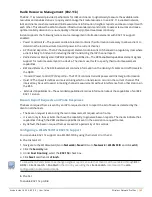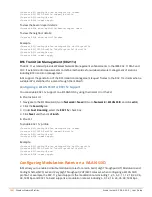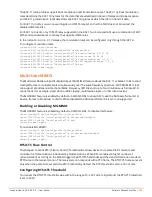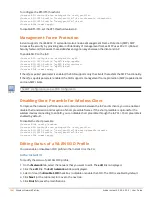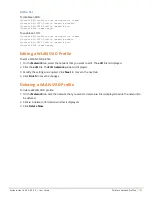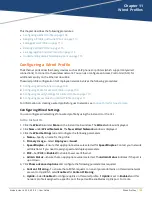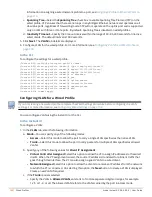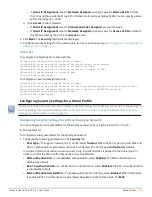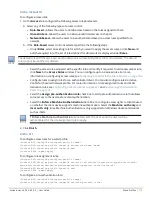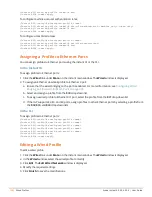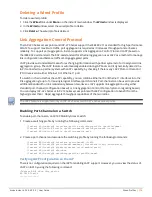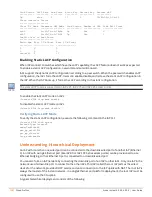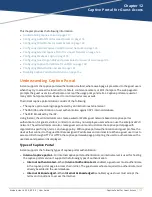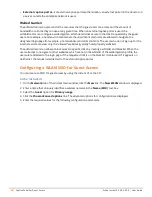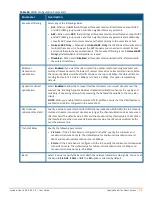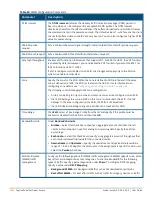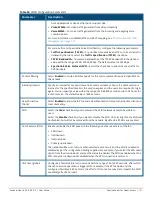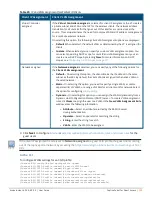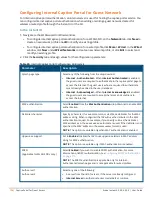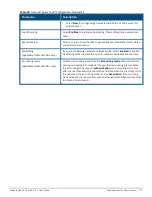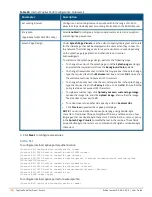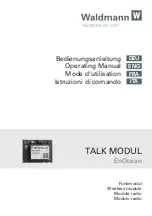
Aruba Instant 6.5.0.0-4.3.0.0 | User Guide
Captive Portal for Guest Access |
117
Chapter 12
Captive Portal for Guest Access
This chapter provides the following information:
l
Understanding Captive Portal on page 117
l
Configuring a WLAN SSID for Guest Access on page 118
l
Configuring Wired Profile for Guest Access on page 124
l
Configuring Internal Captive Portal for Guest Network on page 126
l
Configuring External Captive Portal for a Guest Network on page 129
l
Configuring Facebook Login on page 135
l
Configuring Guest Logon Role and Access Rules for Guest Users on page 136
l
Configuring Captive Portal Roles for an SSID on page 138
l
Configuring Walled Garden Access on page 141
l
Disabling Captive Portal Authentication on page 142
Understanding Captive Portal
Instant supports the captive portal authentication method, where a web page is presented to the guest users
when they try to access the Internet from hotels, conference centers, or Wi-Fi hotspots. The web page also
prompts the guest users to authenticate or accept the usage policy and terms. Captive portals are used at
many Wi-Fi hotspots and can be used to control wired access as well.
The Instant captive portal solution consists of the following:
l
The captive portal web login page hosted by an internal or external server.
l
The RADIUS authentication or user authentication against IAP's internal database.
l
The SSID broadcast by the IAP.
Using Instant, the administrators can create a wired or WLAN guest network based on captive portal
authentication for guests, visitors, contractors, and any non-employee users who can use the enterprise Wi-Fi
network. The administrators can also create guest accounts and customize the captive portal page with
organization-specific logo, terms, and usage policy. With captive portal authentication and guest profiles, the
devices that connect to the guest SSID are assigned IP addresses and an initial role. When a guest user tries to
access a URL through HTTP or HTTPS, the captive portal web page prompting the user to authenticate with a
username and password is displayed.
Types of Captive Portal
Instant supports the following types of captive portal authentication:
l
Internal captive portal
—For Internal captive portal authentication, an internal server is used for hosting
the captive portal service. It supports the following types of authentication:
n
Internal Authenticated
—When
Internal Authenticated
is enabled, a guest user must authenticate
in the captive portal page to access the Internet. The guest users who are required to authenticate must
already be added to the user database.
n
Internal Acknowledged
—When
Internal Acknowledged
is enabled, a guest user must accept the
terms and conditions to access the Internet.

